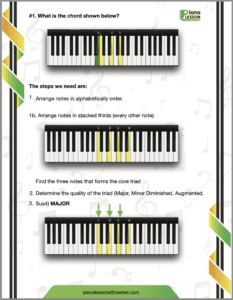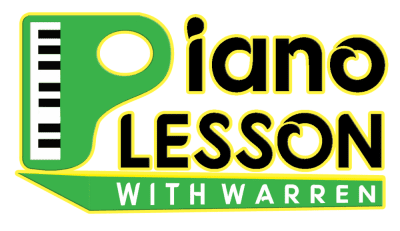Introduction:
Welcome back to another exciting piano lesson with Warren McPherson! If you’re new to the channel, my name is Warren McPherson, and today, we’re diving deep into the fascinating world of piano embellishments and improvisation. This topic is like a bottomless well of creativity, offering endless possibilities and avenues for pianists to explore. In this blog post, we’ll explore the three fundamental pillars of improvisation: Melody, Harmony, and Rhythm, and how you can take your embellishments and improvisation skills to the next level. So, let’s get started!
The Three Big Blocks of Improvisation:
Improvisation is an art that encompasses a wide range of techniques and styles, making it a multifaceted topic. It can be categorized into three primary elements: Melody, Harmony, and Rhythm. Understanding how these elements work together is crucial for pianists aiming to enhance their improvisation skills.
- Melody:
Melody is the heart of improvisation. It involves creating beautiful and expressive single-note lines that add depth and emotion to your music. Melodic improvisation often revolves around the diatonic notes of the scale and the chord tones. You can create captivating melodies by using chord tones as points of resolution and incorporating neighboring and passing tones to add color and movement.
- Harmony:
Harmony plays a vital role in enriching your improvisations. One way to incorporate harmony is by harmonizing your melodic lines. You can experiment with intervals like thirds and sixths, creating harmonies that beautifully complement your primary melody. Additionally, exploring fourths and inversions can add a modern jazz flavor to your improvisations. Triads, especially in first and second inversions, can harmonize your lines and create lush, full sounds.
- Rhythm:
Rhythm is the driving force behind engaging and dynamic improvisations. Varying your rhythmic patterns can infuse energy and character into your playing. It’s essential to become comfortable with different note values, such as quarter notes, eighth notes, triplets, and sixteenths, and to experiment with syncopation. Don’t forget about special rhythmic techniques like turns and grace notes, which can add unique textures to your improvisations.
The Importance of Technique:
Improvisation and embellishment become much more accessible and expressive when you have a solid foundation in piano technique. Technique serves as the vehicle through which you convey your musical ideas. Think of it as the tools in your musical toolbox, enabling you to execute your improvisations with precision and ease. It’s essential to practice scales, arpeggios, blocked chords, and broken chords regularly to enhance your technical proficiency.
Applying the Concepts:
Now, let’s see how these elements come together in practical examples. We’ll take a simple chord progression in the key of F major as a basis for our improvisation journey.
We’ll use the song “Open the Floodgates of Heaven” as our starting point. The chord progression involves F major, G sus, C major, D minor 7, C minor, and Bb major. Here’s how you can apply the concepts:
Melodic Improv: Start with the diatonic notes and chord tones. Experiment with neighboring and passing tones to create captivating melodies that move between chord tones.
Harmonic Improv: Use intervals like thirds, sixths, and fourths to harmonize your melodies. Explore triads and inversions to create rich harmonies. These harmonies can be applied to your melodic lines, adding depth and color.
Rhythmic Improv: Vary your rhythmic patterns using different note values like eighth notes, triplets, and sixteenths. Experiment with syncopation and special rhythmic techniques such as turns and grace notes to add excitement to your improvisations.
As you can see, combining these three elements allows you to transform a simple chord progression into a rich and dynamic musical experience. By embracing melody, harmony, and rhythm, you’ll unlock the true potential of your improvisation and embellishment skills.
Conclusion:
Improvisation is a captivating journey that opens up endless creative possibilities for pianists. By understanding the three key elements of Melody, Harmony, and Rhythm and honing your piano technique, you can take your embellishments and improvisations to new heights. Remember, practice is the key to mastery, so embrace the process and let your creativity flow. If you’re eager to explore this world further, consider joining a program like “Piano Lesson with Warren” for structured guidance and support.
Thank you for joining us in this exploration of piano embellishments and improvisation. Keep practicing, stay inspired, and let your musical journey flourish. Until next time, happy playing!
Download The 7 Steps To Naming ANY Chord PDF For FREE
With this PDF, you NEVER HAVE TO GUESS what chord you’re playing.


